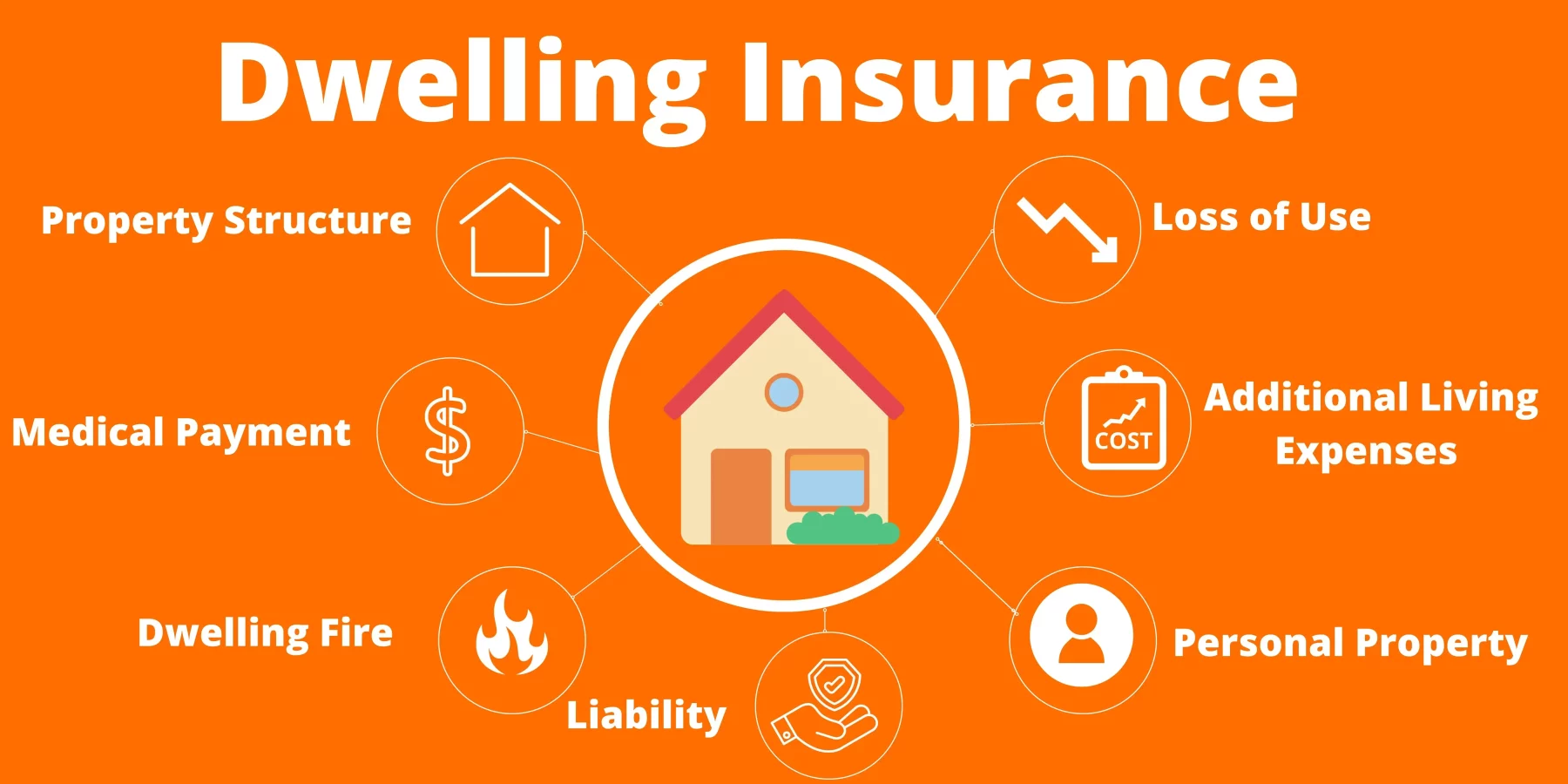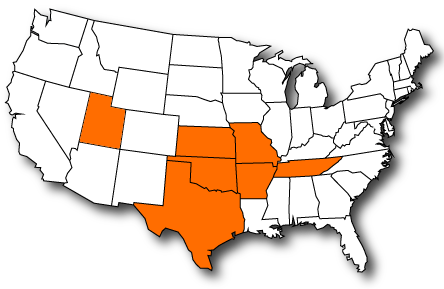Owning a home is a significant investment and safeguarding it against unforeseen perils is crucial. Dwelling insurance in Arkansas, often referred to as home insurance, is a vital component in protecting your home and its structure. This insurance coverage provides financial protection against various risks that can cause damage to the physical structure of your house. Understanding what dwelling insurance covers is essential for homeowners to ensure adequate protection and peace of mind.

What is Dwelling Insurance?
Dwelling insurance stands as a cornerstone in safeguarding the structural integrity of your home. Its central purpose revolves around shielding homeowners from financial burdens arising from unexpected damage. Specifically, it shields against an array of perils that could compromise the physical structure of your residence. Common covered perils span from elemental hazards like fire, lightning, windstorms, hail, and explosions, to instances of vandalism, and more.
Yet, it’s critical to recognize the limitations inherent in standard dwelling insurance policies. Notably, natural disasters such as floods and earthquakes typically fall beyond the coverage purview, necessitating separate insurance for comprehensive protection. Understanding these nuances is pivotal for homeowners, prompting them to assess their geographical risks and consider supplemental coverage to fortify their homes against any potential threats that might not be included in standard policies.
Coverage for the Structure
Dwelling insurance forms a crucial safety net specifically designed to safeguard the physical elements that constitute your home. Its primary focus revolves around the structural integrity of the house itself. This comprehensive coverage encapsulates an array of essential components including the walls, floors, roof, foundation, and even the built-in appliances. Essentially, any integral part that contributes to the structural foundation of the dwelling falls within the protective sphere of this insurance.
Should unforeseen covered perils wreak havoc and cause damage to these structural elements, dwelling insurance steps in as a financial shield. It assists in shouldering the weight of repair or reconstruction costs, alleviating the financial strain on homeowners. In essence, this coverage acts as a vital safety cushion, providing a sense of security in the face of potential damages.
Notably, the coverage amount within dwelling insurance policies is commonly determined based on the estimated cost required to rebuild the home at prevailing construction rates. It’s important to highlight that this assessment doesn’t typically consider the home’s market value. Instead, it focuses solely on the expenses involved in restoring or reconstructing the physical structure to its pre-damaged state.
Understanding this crucial distinction is pivotal for homeowners. It emphasizes the need to ensure that the coverage amount aligns with the current rebuilding costs, preventing potential gaps in coverage that could arise due to fluctuations in construction prices or property values over time. Being well-informed about these nuances enables homeowners to make informed decisions, ensuring that their dwelling insurance adequately protects their most valuable investment — their home’s structural integrity — against unforeseen adversities.
Additional Structures
Beyond the primary residence, specialty dwelling insurance often extends its protective umbrella to encompass other structures situated on the property. These ancillary structures, including detached garages, sheds, fences, and guesthouses, receive coverage under many insurance policies. This additional coverage is designed to shield these structures from similar perils as the main house, ensuring a comprehensive safeguard against various potential hazards.
Similar to the coverage for the main dwelling, the insurance protection for these additional structures is usually subject to predefined coverage limits. These limits are commonly set as a percentage of the total dwelling coverage. Therefore, the coverage amount for these ancillary structures is proportionally determined based on the overall coverage allocated to the primary dwelling.
This facet of dwelling insurance is instrumental in ensuring that not only the main house but also these supplementary structures receive financial protection in case of damage or destruction caused by covered perils. Whether it’s a standalone garage housing vehicles or tools, a separate guesthouse used for accommodating guests, or fences demarcating the property, the inclusion of these structures in the insurance coverage offers homeowners peace of mind.
Understanding the scope and limits of coverage for these additional structures is crucial for homeowners. It empowers them to assess their insurance needs comprehensively, ensuring that these ancillary components of their property are adequately protected. Regularly reviewing policy details and reassessing coverage requirements can assist homeowners in maintaining appropriate levels of protection for all aspects of their property, not just the primary dwelling.
Personal Property Protection
While dwelling insurance primarily focuses on the structure, it may also provide coverage for your personal belongings inside the home. This coverage helps replace or repair your furniture, clothing, electronics, and other possessions if they are damaged or destroyed due to covered perils, such as fire or theft. However, the coverage for personal property is often subject to certain limits and may not cover high-value items like jewelry or art pieces. Additional riders or endorsements can be added to the policy to cover such valuable items.
Liability Coverage
Dwelling insurance often includes liability coverage, which protects homeowners in case someone is injured on their property or if their property causes damage to others. For instance, if a visitor slips and falls on your icy driveway and decides to sue you, liability coverage can help cover legal fees, medical expenses, and settlement costs.
Loss of Use Coverage
Loss of use coverage within dwelling insurance serves as a critical safety net for homeowners facing the upheaval of temporary displacement. When unforeseen damage to your home renders it uninhabitable due to covered perils, this coverage becomes a financial lifeline. It steps in to alleviate the burden by covering the additional living expenses incurred while your residence undergoes repairs or reconstruction.
The scope of loss of use coverage is comprehensive, encompassing a range of essential expenses that arise during the displacement period. This coverage often extends to assist with temporary accommodation expenses, enabling affected homeowners to seek alternative housing arrangements without bearing the full brunt of the costs. Whether it’s renting an apartment, staying in a hotel, or finding a short-term rental property, this coverage can help offset these temporary housing expenses.
Moreover, loss of use coverage doesn’t merely limit itself to lodging expenses. It also extends support by covering additional living costs that exceed your typical budget. This could encompass increased dining expenses incurred due to not having access to your kitchen, additional commuting costs if the temporary accommodation is farther from your workplace, storage fees for your belongings, and various other necessary living expenses that arise due to the displacement from your home.
Understanding the nuances and provisions of loss-of-use coverage is crucial for homeowners. In times of distress caused by significant damage to their homes, this coverage acts as a financial cushion, allowing individuals and families to maintain a semblance of normalcy amid the turmoil. By easing the burden of additional expenses incurred during displacement, loss of use coverage plays a pivotal role in helping homeowners navigate through challenging times while their homes are being restored to their former states. Regularly reviewing and understanding this coverage within dwelling insurance ensures that homeowners are well-prepared to handle unforeseen circumstances with greater ease and financial security.
Exclusions and Additional Coverages
While dwelling insurance provides comprehensive coverage, it’s important to be aware of exclusions and limitations. As mentioned earlier, certain perils like floods and earthquakes require separate policies or endorsements. Additionally, coverage for specific types of damage, such as mold or sewer backups, might not be included in standard policies but can often be added through endorsements or as separate coverage.
Conclusion
Dwelling insurance serves as a vital shield for homeowners, providing financial protection against various risks that can damage the structure of their homes. Understanding what dwelling insurance covers, including the structure itself, additional structures, personal property, liability, and loss of use, is crucial for homeowners to ensure they have adequate protection.
Reviewing policy details, considering additional endorsements or separate policies for specific perils, and regularly reassessing coverage needs can help homeowners maintain comprehensive protection for their valuable investment.
Ready to protect your Arkansas home? Contact G&G Independent Insurance to customize dwelling insurance coverage that suits your needs and secure your home with confidence.


